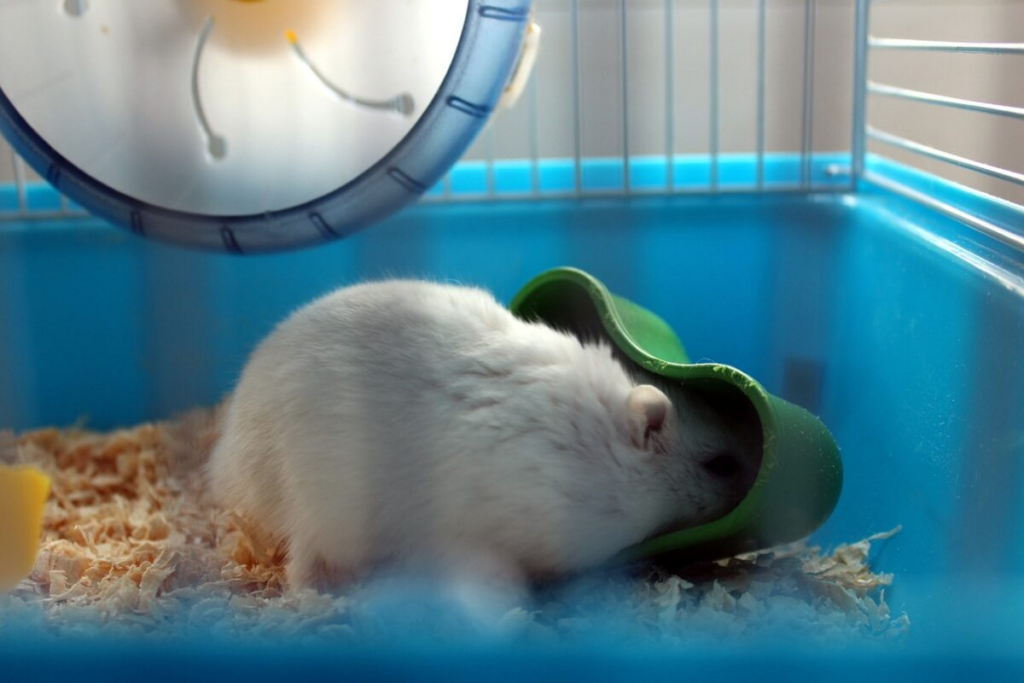Understanding the Pros and Cons of Plastic Hamster Cages
Plastic hamster cages are a popular choice for many pet owners. They are lightweight, affordable, and easy to clean. However, they also have some drawbacks that need to be considered before making a purchase. Here are some of the pros and cons of plastic hamster cages:
Pros:
- Lightweight: Plastic hamster cages are lightweight and easy to move around. This makes them an ideal choice if you need to move the cage frequently.
- Easy to clean: Plastic cages are easy to clean and sanitize. They can be washed with soap and water and disinfected using a pet-safe disinfectant.
- Affordable: Plastic cages are generally less expensive than metal cages, making them an attractive choice for pet owners on a budget.
Cons:
- Less durable: Plastic cages are less durable than metal cages and can be prone to cracking or breaking if they are not handled carefully.
- Prone to chewing: Some hamsters are notorious chewers, and plastic cages may not be the best choice for these pets. Hamsters can chew through plastic, potentially causing harm to themselves or escaping.
- Limited ventilation: Plastic cages may not offer as much ventilation as metal cages, which can lead to poor air quality for your pet.

Understanding the Pros and Cons of Metal Hamster Cages
Metal hamster cages are another popular choice for pet owners. They are sturdy, durable, and resistant to chewing. However, they also have some potential drawbacks that need to be considered. Here are some of the pros and cons of metal hamster cages:
Pros:
- Durable: Metal cages are more durable than plastic cages and can withstand wear and tear. They are less likely to crack or break, making them a good long-term investment.
- Resistant to chewing: Metal cages are resistant to chewing, making them a safer choice for hamsters that like to chew.
- Good ventilation: Metal cages offer good ventilation, which can help reduce the risk of respiratory problems in your pet.
Cons:
- Heavy: Metal cages are heavier than plastic cages, which can make them challenging to move around.
- Harder to clean: Metal cages can be more challenging to clean than plastic cages. They may require a bit more effort to disinfect and sanitize properly.
- Expensive: Metal cages are generally more expensive than plastic cages, which may be a consideration if you are on a tight budget.
Factors to Consider When Choosing Between a Plastic or Metal Hamster Cage
When choosing between a plastic or metal hamster cage, there are several factors to consider. Here are some of the key considerations:
- Size of the cage: The size of the cage is an important factor to consider when choosing between plastic or metal. Plastic cages are generally available in smaller sizes, whereas metal cages are available in a wider range of sizes.
- Age and size of your hamster: The age and size of your hamster will also affect your choice of cage. Young hamsters will require a smaller cage, whereas adult hamsters will need a larger cage to accommodate their size.
- Environment: The environment in which the cage will be placed is also a key consideration. If the cage will be located in a colder environment, a metal cage may offer better insulation. If the cage will be located in a warmer environment, a plastic cage may be more suitable.
- Personal preferences: Personal preferences also play a role in choosing between a plastic or metal hamster cage. Some pet owners may prefer the look and feel of a particular type of cage, or may have had more success with one type of cage over another.
It’s important to remember that safety and comfort should be the top priority when choosing a hamster cage. Ensure that the cage you choose is safe, secure, and provides your pet with enough space to move around comfortably.
Other Considerations When Choosing a Hamster Cage
In addition to choosing between plastic or metal, there are other factors to consider when selecting a hamster cage. Here are some additional considerations:
- Ventilation: Good ventilation is essential for your hamster’s health and well-being. Ensure that the cage you choose provides adequate ventilation to prevent respiratory problems.
- Quality of materials: The quality of materials used in the cage is also important. Ensure that the cage is made from durable, non-toxic materials that are safe for your pet.
- Accessories: The accessories that come with the cage can also influence your choice. Look for cages that come with accessories such as a wheel, food bowl, and water bottle.
- Cleaning and maintenance: Regular cleaning and maintenance are essential to keep your hamster’s cage clean and hygienic. Choose a cage that is easy to clean and maintain, and that can be disinfected with a pet-safe disinfectant.
Summing Up
Choosing between a plastic or metal hamster cage requires careful consideration of several factors. By understanding the pros and cons of each type of cage, the factors to consider when choosing a cage, and other important considerations such as ventilation and accessories, you can ensure your hamster lives in a comfortable and healthy environment. With these tips and recommendations, you can provide your furry friend with the care and attention they need to thrive.